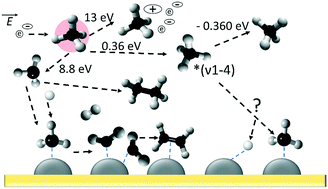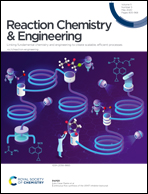Plasma-enhanced catalysis for the upgrading of methane: a review of modelling and simulation methods
Abstract
The direct upgrading of methane to higher hydrocarbons via plasma-catalysis has received particular attention due to the high valorisation potential of the molecule and methane's wide availability in both fossil and sustainable sources. Extensive experimental work has focused on the study of the performance of plasma-catalytic systems. However, it is recognised that most plasma-surface interactions are still not fully understood, and that the combination of experimental, theoretical and modelling studies is essential to gain a fundamental mechanistic insight, leading to advancements in the field. The current review presents the state-of-the-art of simulation methodologies for plasma-phase kinetics, plasma fluid modelling and plasma-catalyst interactions as these have been applied for methane plasmas. Focus is placed on the species that should be considered during modelling, ranging from stable molecules and radicals to ions and excited states. The types of plasma-chemical processes these species participate in are discussed and the methods for calculating their rates are presented. Modelling approaches spanning from spatially homogeneous and computationally inexpensive zero-dimensional codes to more complex fluid modelling approaches are covered. First principles calculations concerning plasma relevant species interactions with metal surfaces are finally summarised.



 Please wait while we load your content...
Please wait while we load your content...